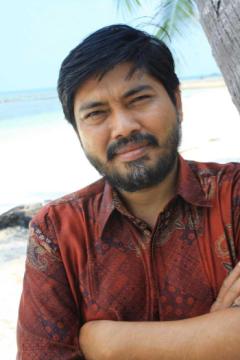Cilamaya port: Which interest it serves?
When
it was firstly introduced to the public in 2014, the development plan of
Cilamaya port in Karawang, West Java, has been triggering the pros and cons within
Indonesia’s maritime community. Those who support the development are on the
opinion that upon its completion the port will provide a better service level to
the manufacturers scattered in the industrial complex in Karawang, Cikampek and
Cibitung, West Java. These businessmen are reportedly suffer high logistical
costs if ship their cargo through Tanjung Priok port due to the prolonged
traffic jam or inefficiency at the country’s busiest and biggest port.
On the other hand, the opposition
say that Cilamaya port development will destroy the existing oil production
facility belonging to the state-owned oil producer Pertamina. It is also going
to fiercely compete Kalibaru terminal at Tanjung Priok. Whereas, Tanjung
Priok’s new venture is offered to the Japanese investor of Mitsui & Co. Ltd.
with a guarantee that, among other thing, it will face no competitor until its
investment sufficiently profitable, or at least, meet the break event point.
The sogo
shosha, has committed to allocate Rp 3.5 trillion of investment into a new
subsidiary which will be established by the Jakarta-based Indonesia Port Enterprise
or Pelindo II, the owing corporation of Kalibaru terminal, and obtain 49 shares
of it in return. This subsidiary is to manage the terminal’s container quay.
But, there is no available information whether the subsidiary already set up or
not whereas the facility is scheduled to operate this year. Except the
container quay, Kalibaru will also operate the liquid and conventional berths
of which their construction is to complete in 2018. Pelindo II expenses an
estimated investment of US$ 4 billion to develop Kalibaru.
It
must be remembered that the idea to construct Cilamaya port is initiated by
Japan and jolted down in a Japan-Indonesia cooperation scheme dubbed the
Metropolitan Priority Area (MPA). Signed in Tokyo by then Coordinating Economic
Minister Hatta Rajasa, the port is one part of the Japanese government
commitment to improve Indonesia’s infrastructures. The port will be developed
by Japan under a build, operate and transfer model of which its main users are
the Japanese companies operating in the industrial estates in Cikarang, Cikampek
and Karawang.
In
the ongoing debate over Cilamaya port development plan the Japanese interest is
no longer clearly heard. It seems that they are on wait-and-see mode, or maybe
they were already kicked out of the playground. Regardless, those who are
involved in the debate had totally forgotten the centrality of Japan in the
development of the port. A series of feasibilities studies have been financed
by JICA since 2010 to show off their seriousness; the new one was in SBY’s
administration that involved Booz & Co., Mott McDonald and DNV-GL. However,
the acquisition and clearing of construction site is still postponed caused by
the controversy.
The
idea to remove the construction site from Cilamaya to an alternative location
outside the sub-district, to Kendal in Central Java province for instance, is therefore
an absurd. If it is removed, the project practically can not anymore be called
‘Cilamaya port development’, right? Who is going to finance the alternative
port development? Japan will possibly say no to it because it is largely out of
what they have previously planned. Ganjar Pranowo, the governor of Central
Java, the man who suggests the removal, repeatedly said he urgently needs a
deep sea port to cater the increased of trade in his province.
Central
Java actually has a big port, namely Tanjung Emas, but it is under the management
of Surabaya-based Indonesia Port Enterprise (Pelindo III) of which the
provincial administration has no stakes in it. The governor is not the only executive
demanding port development. Since the introduction of sea highway program by
President Joko “Jokowi” Widodo, where he allocates Rp 700 trillions for 24 port
projects, many governors even mayors hurriedly propose their regions eligible
for the funding. Of course, the competition is very tight. So, if there is a foreign
capital seeking an area for port location, those vassals will be more than happy;
they will fight for the fund to touch down at their territory. What about ship
call? They do not fully think whether the port will be visited by the shipping
lines upon their completion or not.
In
responding to the change of construction location, the government finally decides
that Cilamaya port project will be shifted to the other site to be announced
later. Not only that, the government also invites the investors from South
Korea to participate in the development calculated to cost US$2.5 billion. It
seems that Japan is already left behind or it is going to be duelled to its neighboring state by the
government. The government policy to keep developing Cilamaya port although all
reasons for that are no longer proper ignites a big question: why is that?
The
possible answer is that Cilamaya port development is used by the Transportation
Minister Ignasius Jonan to compete Cirebon port extension project carried out
by Pelindo II. Moreover, Cilamaya is also clearly aimed at destabilizing
Kalibaru project. In Cilamaya port development polemic actually a bunch of
people prefer to support the extension project because all infrastractures
already on-site. It looks like that the minister takes the issue as his
personal battle with Pelindo II.*****
Diterbitkan dalam INDONESIA SHIPPING GAZETTE, Senin, 30 Maret 2015
.jpg)



Komentar
Posting Komentar